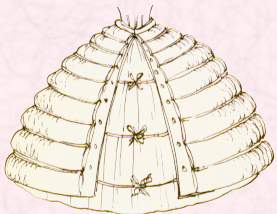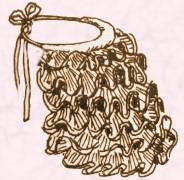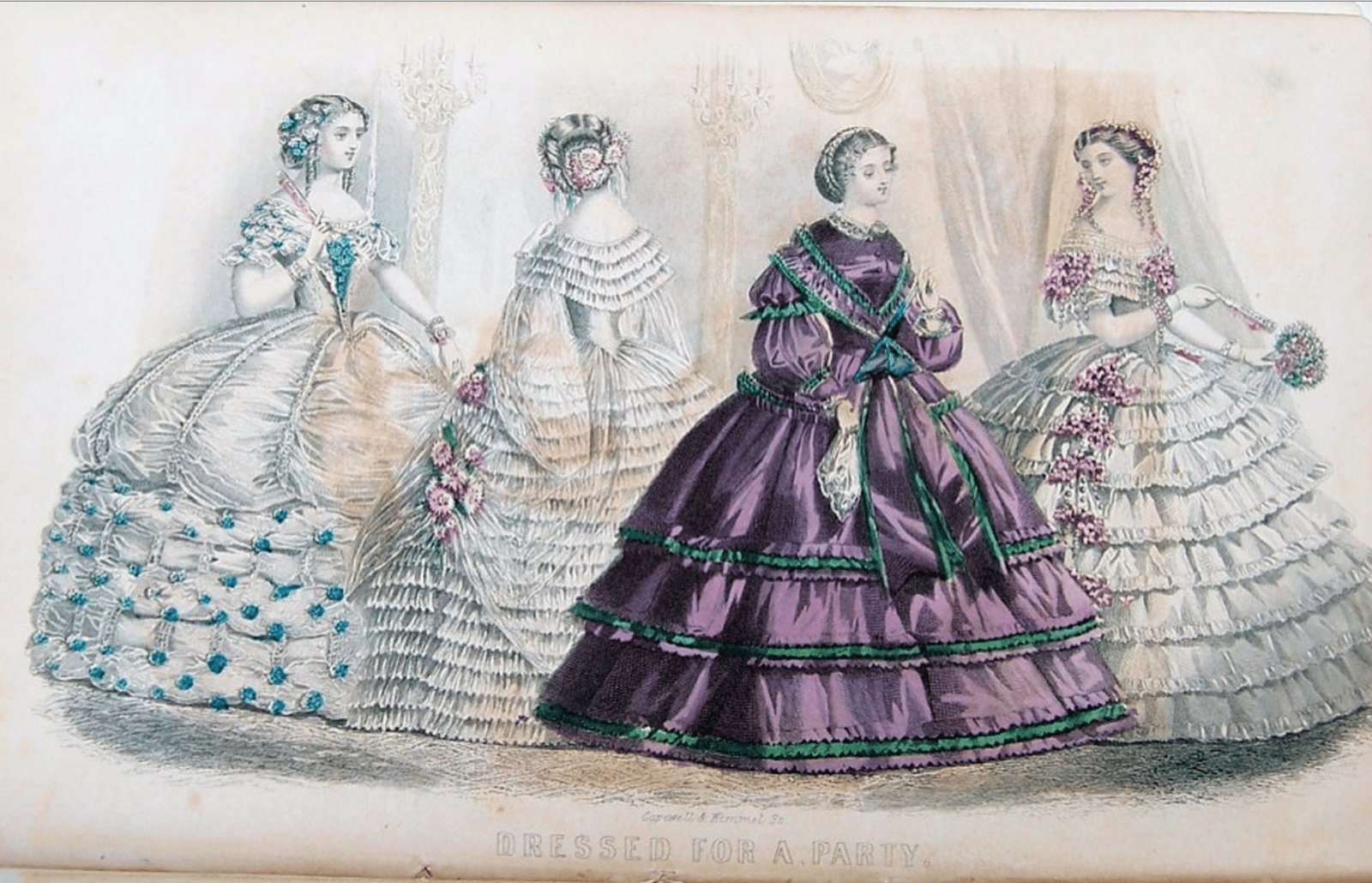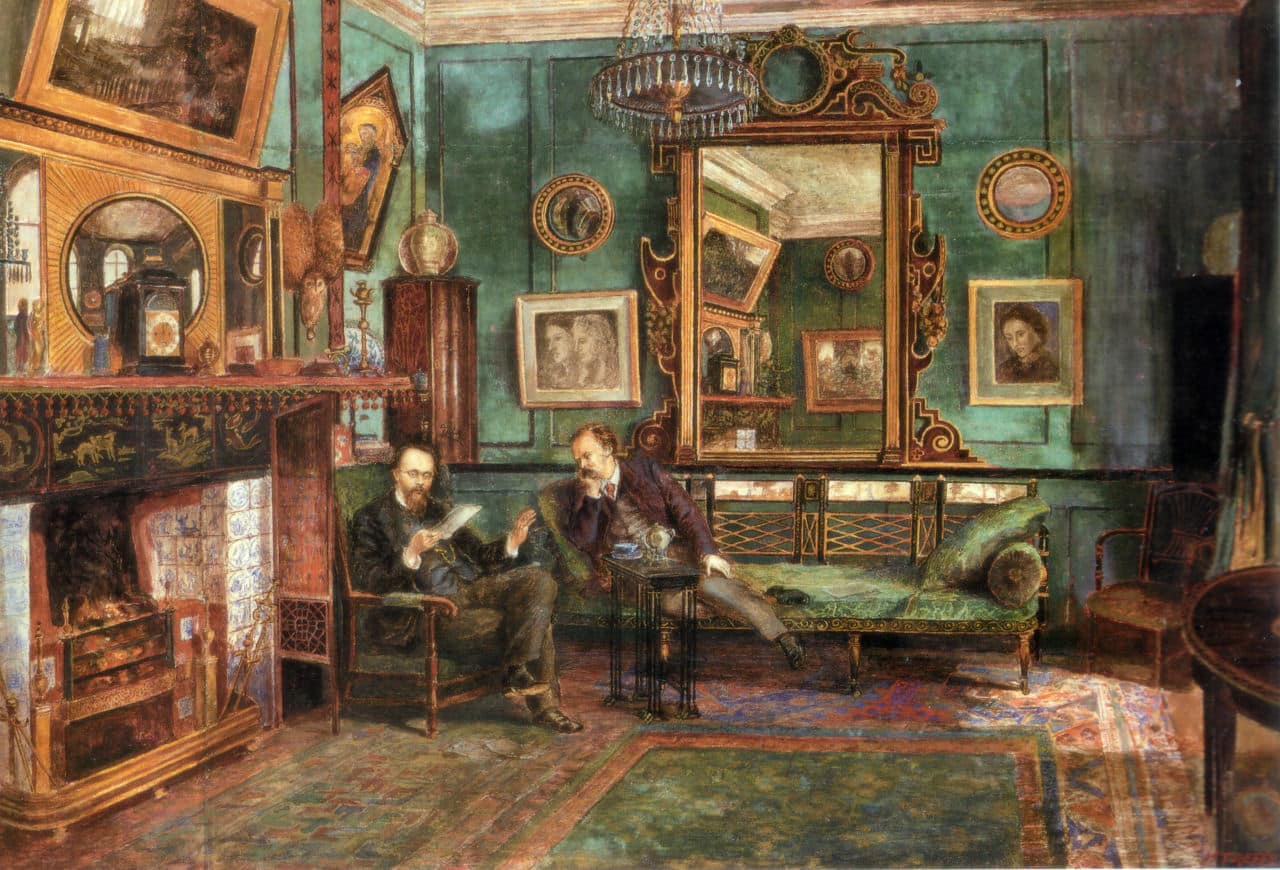By Pauline Weston Thomas for Fashion-Era.com
- Crinolines
- The Horsehair Crinoline Petticoat of 1830s
- Cage Crinoline or Artificial Crinoline of 1856
- W. S. Thomson Patents Metal Cage Crinoline
- Crinoline Styles
- 1860 - Crinoline Fullness Moves to Skirt Back
- The Emergence of the Polonaise
- The Tournure
Crinolines
The Horsehair Crinoline Petticoat of 1830s

In the 1830s a linen material woven with horsehair called crinoline was first used for cloth petticoats.
The word crinoline comes from the French for 'crin' and 'lin', meaning horsehair and linen respectively.
This version of a petticoat was the original crinoline and later the name continued in use incorrectly, but universally for the caged or hooped underskirt frames.
In the 1840s flounces were added to the full skirts and these gave an illusion of extra skirt width.
The new skirt style which emerged in 1841 was achieved by a method of gauging fabric into organ or cartridge pleats which introduced yet more fullness. This was abandoned in 1846 for flat pleating which gave even more width. After 1845 double flounced skirts helped push the shape out, making the skirt look even broader.
Cage Crinoline or Artificial Crinoline of 1856
As the decade progressed, more and more petticoats were added until the skirts were very full. For decency as well as fashion a minimum of six petticoats was considered essential. They became very heavy and unbearable in the summer heat.
At last in 1856 the cage crinoline petticoat or artificial crinoline was introduced. With this support, ladies had to wear just one petticoat to soften the cage ridges. Of course, as gusts of wind often blew the crinolines sideways, long drawers became essential underwear.
W. S. Thomson Patents Metal Cage Crinoline
The American W. S. Thomson patented the metal cage crinoline in the USA, France, and Britain in 1856. Marketed in these three countries it soon became a huge hit. The crinoline knew no class differences and it was the first fashion to be adopted in England and America by all classes, even if the quality of the crinoline was doubtful the cheaper it got. Illustrations of working women wearing cheaper versions of the cage show ugly ridges of steel bands.
Women loved the cage crinoline. At the height of its popularity, enough steel was produced in Sheffield to make half a million hoops in one week. Ladies were freed from the heavy petticoats that had begun to weigh them down and they were able to move their legs very freely beneath the cage.
The cage crinoline could be awkward in wear and could cause damage to objects, knocking them with a swish in the wrong direction.
Even so, it was a welcome alternative to restrictive petticoat layers. Pottery workers found crinolines difficult to work in, but they persisted in wearing them despite causing breakages. Crinoline fashion was everywhere and reached small towns quicker than ever before after the railway spread ideas more rapidly from town to country.
Crinoline Styles
At its peak, the cage crinoline gave skirts a full rounded domed contour like a round teapot cover. Various styles were fashionable each year and some are listed below.
- The Duchess Skirt-Draper of 1855
- The Parisien (sic), Tournure petticoat of 1857
- The Tavernier Underskirt of 1857
- The Duchâteau Underskirt of 1858
- The Over-Petticoat of 1860
- The American Thomson Cage of 1862
- The Patent Medicis Underskirt of 1865
1860 - Crinoline Fullness Moves to Skirt Back

The skirt reached its maximum width in 1860 when the emphasis began to slope toward the back of the skirt.
This gave the skirt a more pyramid shape which was frequently achieved when skirts were made of several panels.

Fullness was reduced at the waist and hips making the skirt lie smooth over the stomach and the fan-like shaped panels spread out at floor level.
The Emergence of the Polonaise
The back began to develop an almost train-like quality. Eventually the front flattened and the fullness swept even further to the back of the skirt. By 1864 the support of a crinoline frame was decreasing in use. The double skirt became fashionable again.
Most women were wearing a modified form of the crinoline without upper hoop rings by 1867. Just a few steel hoops were left at the bottom, but now at least two petticoats were needed to stop hollows appearing in the silhouette.
As had happened a century before with double skirt styles, it was not long before the skirts were being looped and drawn up into a puffed effect similar to the polonaise of the eighteenth century.
Crinoline foundations and petticoat supports.

The Tournure

Crinolines were still worn, but they simply changed their shape. By 1869 the flounce frilled horsehair tournure dress improver or bustle was the undergarment to own to achieve the fashionable silhouette of the day.

